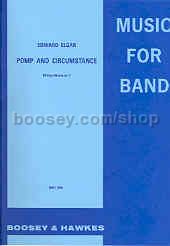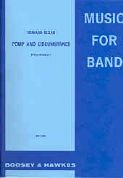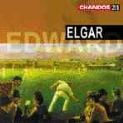Pomp & Circumstance March 1 (Military Band Score & Parts)
Pomp & Circumstance March 1 (Military Band Score & Parts)
* Estimated price converted from UK retail price
March No. 1 was sketched on 3 June 1901 and completed in July, within a month of No. 2. Its central tune hails from before these dates, for Dora Penny recounted how she visited in May 1901 Craeg Lea, Elgar’s home in Great Malvern, and Elgar told her about his “damned fine popular tune”: “I’ve got a tune that will knock’em – knock’em flat”. He sent Nos. 1 and 2 to Boosey’s in August and the first was premiered on 19 October 1901 in Liverpool by its dedicatees, the Liverpool Orchestral Society and their conductor A.E. Rodewald. It was repeated in London a few days later by Henry Wood. The result was sensational, and Wood subsequently wrote of the occasion: '“The people simply rose and yelled. I had to play it again – with the same result; in fact, they refused to let me go on with the programme. After considerable delay, while the audience roared its applause, I went off and fetched Harry Dearth who was to sing Hiawatha’s Vision; but they would not listen. Merely to restore order, I played the march a third time. And that, I may say, was the one and only time in the history of the Promenade concerts that an orchestral item was accorded a double encore.'
Boosey published the March in 1902. Years later, on 2 May 1924, it featured in Elgar’s first broadcast for the BBC, played by the Royal Philharmonic Society’s Orchestra at the Central Hall, Westminster.
The march begins with an Elgarian "jape", starting behind the main beat in the key of E flat major, about as far away as possible from the home key of D. The joke is repeated just before the arrival of the trio’s glorious melody, which comes as a relief after the enormous energy of the introduction. Even more than with the Imperial March of 1897, Elgar gave us with this first Pomp and Circumstance march a perfect template with which to design future marches, and a benchmark against which to measure them.
The trio section is the famous melody "Land of Hope and Glory".
(arr. Retford, ed Reed)







